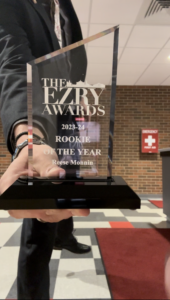Recent events in Ferguson have raised serious questions about the great amount of resources, weaponry, and — ultimately — arbitrary power allotted to police. Rightfully so: the power granted to officers is out of control, and — more importantly — is being used to subjugate an entire group of people based on the color of their skin.
As Radley Alko chronicles in his 2013 book, “Rise of the Warrior Cop,” police departments have been steadily militarizing since the 1960s, transforming from local law-enforcement agencies into small-time militaries — a phenomenon that has recently amplified under the guise of the post-9/11, “War-on-Terror” initiative. According to the Center for Investigative Reporting, the Department of Homeland Security has handed out $35 billion in grants to local departments since 2002, with a lot of the money being used to purchase military-grade gear and weapons — from M16’s, to bayonets, to tactical vests, to armored personnel carriers, to unmanned drones.
Beyond material resources, police are also utilizing hyper-aggressive tactics. In May, while raiding a home in Cornelia, Ga., a SWAT team critically burned a toddler with a flash grenade. In Beavercreek, Ohio — a state that permits citizens to openly carry firearms in public — John Crawford III was shot dead by police for holding a toy gun in a Wal-Mart. Ezell Ford and Eric Garner — both also unarmed citizens — met similar fates. And everyone knows the story of Michael Brown, and the dubious acts used by Missouri police against protesters — most notably, the video of the St. Ann officer waving an assault rifle at reporters, shouting: “I’ll fucking kill you!”
These are only the recent victims; indeed, the list goes on. At-large, SWAT raids have grown from a few hundred per year in the 1970s, to nearly 50,000 annually as of 2010. In fact, according to Pew Research, an American citizen is eight times more likely to be killed by a police officer than a terrorist. Police are, in short, waging war on local communities.
The extreme armament of local police, the arbitrary killings of citizens, and the crackdowns on protesters are certainly indicators that the power of law enforcement agencies must be radically curbed. It is, however, just as — if not more — important to acknowledge that this rise of state force has been disproportionately exercised on people and communities of color.
To use Ferguson as an example: according to the Missouri Attorney General’s office, while Ferguson’s population is 67 percent black, 86 percent of police stops and 92 percent of police searches were conducted on citizens of color.
Ferguson’s racist policing is only a microcosm of this nation’s law enforcement at-large. While people of color make up only 30 percent of the US population, 60 percent of those imprisoned are either black or Latino. This disparity is partially driven by the racialized implementation of the War-on-Drugs: according to a 2013 ACLU study, while black and white citizens report using drugs at the same rate, people of color are four times more likely to be arrested for marijuana possession.
Ultimately, in many ways, the militarization of the police has merely been used as a means to an end, an end that has always been a prevalent, functioning aspect of the American experience: white supremacy. Thus, when one interrogates the rise of police power, one must also confront structural white supremacy, and the racist ideology that doesn’t merely inflict, but in many ways drives American life.
As these problems are inextricably linked, it follows that they must be dismantled together. And, to use the words of James Baldwin, “until this moment comes, there is scarcely any hope for the American Dream.”





